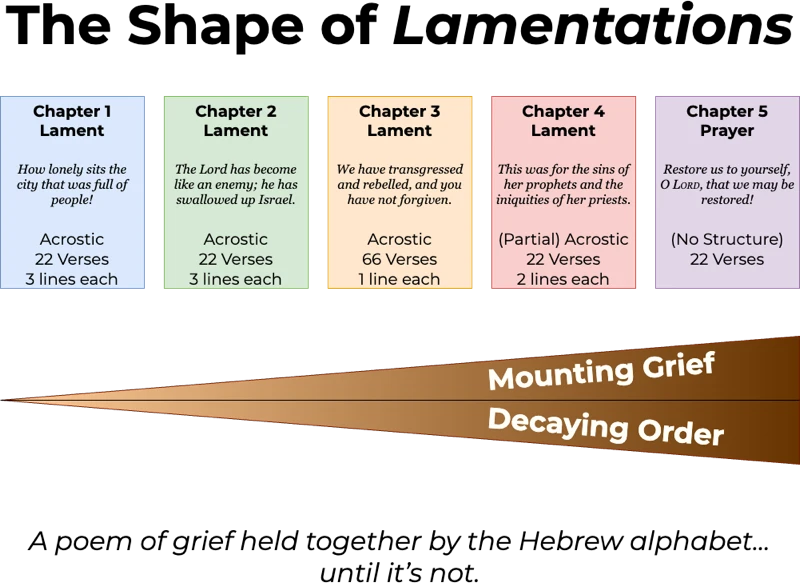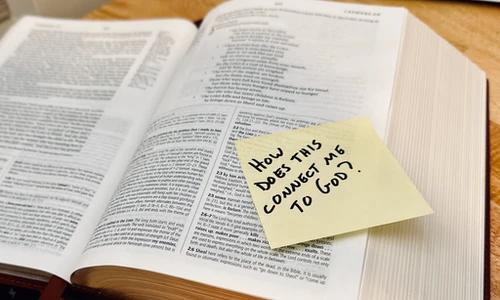This post is part of the series “The Shape of the Bible”
-
The Shape of Lamentations 👈 you are here
Lamentations is one of the most structurally surprising books in the Bible. It consists of five poetic laments written in the aftermath of Jerusalem’s destruction in 586 B.C., expressing the raw grief and theological confusion of God’s people (cf. Lamentations 1:1, 3:1). Tradition attributes the book to the prophet Jeremiah, though the text itself is anonymous.
How lonely sits the city that was full of people!
How like a widow has she become, she who was great among the nations!
She who was a princess among the provinces has become a slave.
But it’s not just the words that convey sorrow—it’s the form. The first four chapters are acrostics, each built on the 22 letters of the Hebrew alphabet. This structure signals the totality of grief: from A to Z, nothing escapes the ruin.
The third chapter, the centerpiece of the book, intensifies the pattern with a triple acrostic—66 lines, three for each letter—emphasizing the crescendo of anguish as the poet reflects on Judah’s long fall from Davidic glory to utter ruin.
The fourth poem modifies the form slightly, assigning two lines to each letter but only beginning the first with the appropriate character. And the fifth? No structure at all—it’s not a poem of grief but a desperate plea for mercy. The form collapses, just as Jerusalem has.
This is not just poetry; it is theology in design. “He has walled me about so that I cannot escape… my soul is bereft of peace” (Lamentations 3:7, 17). The unraveling structure mirrors the unraveling soul. When even the alphabet fails, the grief is complete.

This post is part of the series “The Shape of the Bible”
-
The Shape of Lamentations 👈 you are here



